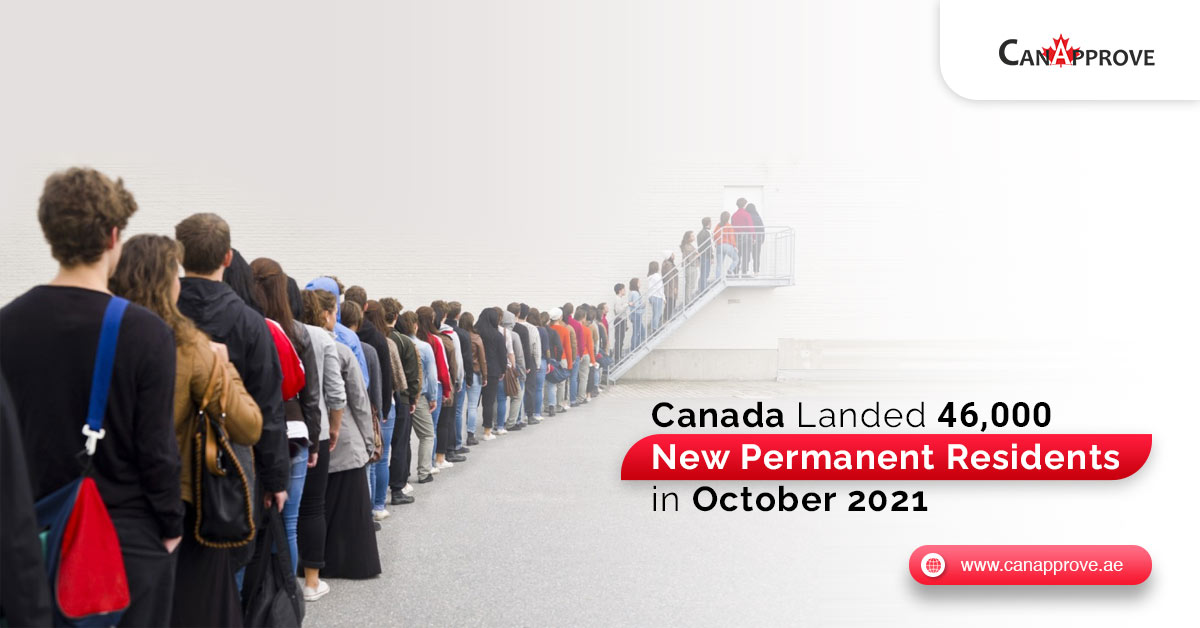Canada landed an overwhelming 46,315 new immigrants in October as per the Immigration, Refugees, Citizenship Canada (IRCC) data. A successful “landing in Canada” means that the legal status of a foreign national in Canada is now converted to permanent residence. This is not limited to individuals entering Canada from overseas but also applied to existing temporary residents living in Canada.
During the month of October 2021, the vast majority of those who have “landed” during the pandemic are existing temporary residents of Canada. However, the case was different before the pandemic, as most new permanent resident landings came to Canada directly from abroad.
Canada remains to be the only G7 country to offer a direct permanent residence pathway to eligible skilled foreign workers. Interested individuals must come good in human capital factors like work experience, language proficiency, age, and education qualification.
The country is currently pursuing its most ambitious Immigration Levels Plan in its history. It plans to welcome 401,000 immigrants in 2021, another 411,000 in 2022, and an additional 421,000 in 2023.
Canada has now welcomed 313,838 immigrants between January and October 2021.
Immigration Minister Open to Increase Immigration Levels
In an interview given to Bloomberg & Toronto Star, the new Canadian immigration minister, Sean Fraser, opened up on the opportunities and challenges in his new role in politics.
The minister is confident and prepared to increase Canada’s immigration levels if it is necessary to address labour shortages. The country is experiencing significant job shortages in large part due to fewer immigrants arriving from overseas amid the pandemic.
Fraser sought support from local businesses and communities to increase the immigration levels. He is “very much open to” even higher levels to accommodate more foreign migrants in Canada.
Unfortunately, Canada is still battling with a backlog of nearly 1.8 million immigration applications. It has grown by almost 350,000 more applications since July.
No matter what impact the travel restrictions had on Canadian immigration, the local authorities are still processing applications and even issuing new permanent residence invitations to successful applicants.
IRCC data revealed the number of applications it had processed during the pandemic:
- 337,000 permanent residence applications were processed between January and September 2021. It processed some 214,000 applications in 2020.
- 1,500,000 temporary residence applications were processed between January and September 2021. This compares to nearly 1,700,000 applications in 2020.
- 134,000 Canadian citizenship applications were processed between January and September 2021. This compares to about 80,000 applications processed in 2020.
Canada is dependent on the immigration of economic-class candidates to overcome dual demographic shocks. Its flagship system to manage applications for federal immigration programs is Express Entry. The Provincial Nominee Programs are also offering reliable permanent residence pathways for foreign migrants.
Choose from 120+ Economic-class pathways to immigrate to Canada.
Click here to learn more.
The federal government has taken suitable measures to achieve its Immigration Levels Plan 2021-2023 to welcome over 1.2 million new immigrants by 2023. The Immigrations Levels Plan 2022-2024 is due to be announced next year, and we can expect the intakes to only increase further.
Canada got off to a strong start to the year before losing momentum. Beginning in June, however, Canada started to pick up the pace with the landing of 35,000 immigrants.
Fill in our free online assessment to know your eligibility for Canada Immigration.
To know more about your prospects of Canada Immigration, contact our consultants at CanApprove.














